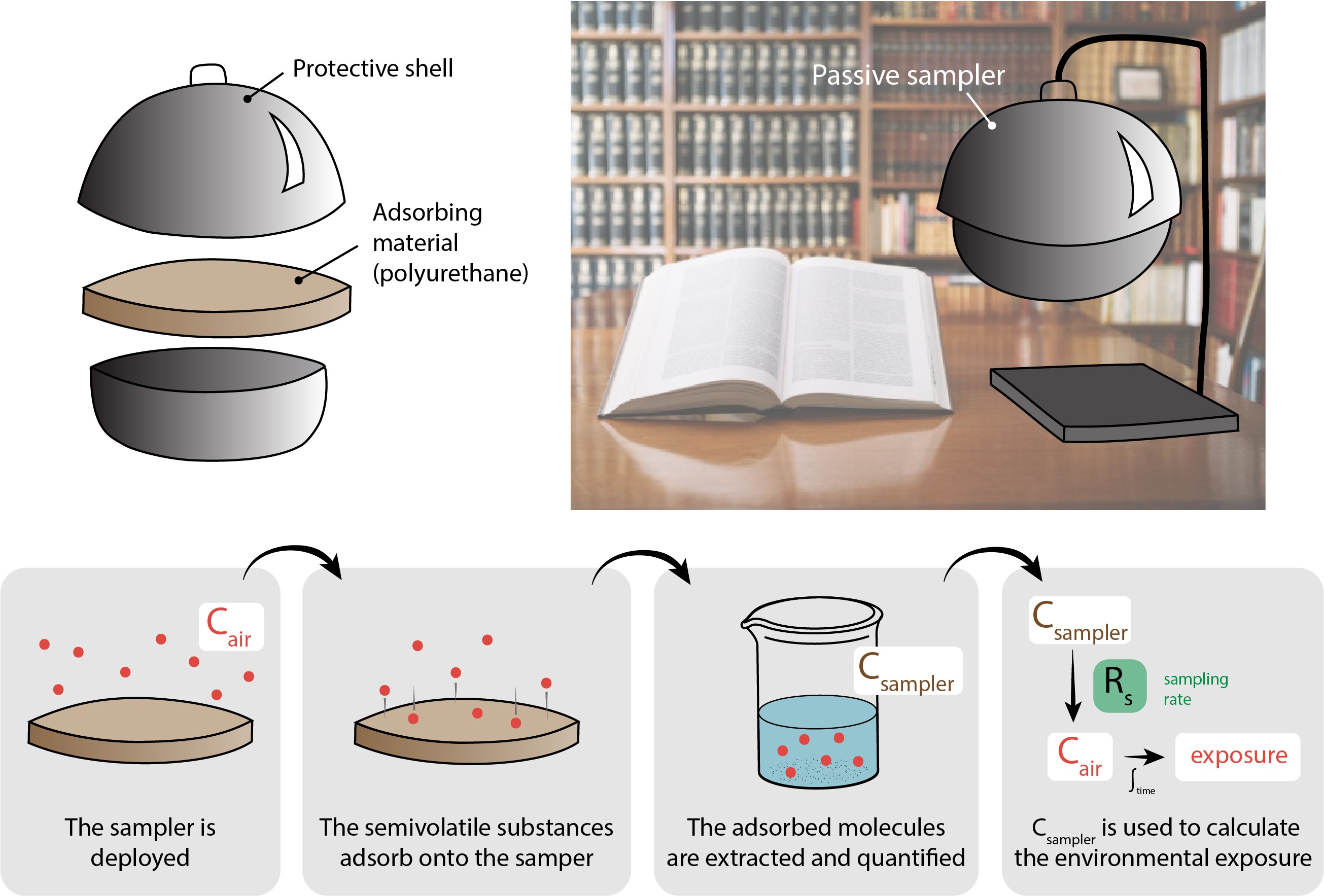Polychlorinated biphenyls (PBCs) are a wide class of compounds with numerous everyday applications such as electrical insulators, cooling fluids, plasticizers and flame retardants – just to name a few. However, back in the 1970s evidence started accumulating on their environmental persistency and on their toxicity as human carcinogens. In 1978, PBCs production was terminated and an international ban followed their inclusion in the Stockholm convention of Persistent Organic Pollutants. Interestingly though, PBCs are still present in our houses and schools today. A recent study conducted in rural and urban schools in the US measured indoor PBCs concentrations one to two orders of magnitude higher than outdoor values.1 Another study measured PBCs in residential homes and found kitchen cabinets to act as an indoor source of these semivolatile compounds.2 Considering their adverse health effects and their widespread occurrence, non-invasive, easy-to-use and cheap detectors are needed to monitor indoor PBCs levels.
In this respect, passive samplers represent a valid alternative to conventional sampling techniques. They consist of a disc of polymeric material placed into a protective shell. After the sampler is deployed in the environment, semivolatile compounds diffuse into the chamber and get absorbed onto the polymer. After a certain exposure time, the passive sampler is withdrawn from the field, and the absorbed compounds are extracted and quantified. The “on-the-sampler” concentration (Csampler) is then used to obtain environmental exposure values.
However, using passive samplers in an accurate and reliable manner is challenging. One of the most critical but elusive parameters is the sampling rate (Rs), which represents the volume of air sampled per unit of time and is required to correctly convert Csampler into exposure data. In outdoor applications the sampling rate is commonly measured using a “depuration compound”, an isotopically-labelled version of the species of interest that is adsorbed onto the polymeric disc before deploying the sampler in the field. The sampling rate is simply estimated from the loss of the depuration compound. This technique is effective, but the toxicity of these reference molecules makes it unsuitable for indoor applications. Another possibility involves the calibration of the passive sampler before its use, but this approach is time consuming and requires the use of an additional independent sampling method (for instance, an active air sampler).
Alternatively, Rs can be estimated with mathematical models. These models have already been developed for outdoor applications and allow the estimation of Rs from the wind speed data. Starting from this point, Herkert and Hornbuckle in their most recent publication hypothesized that these same models, if adjusted appropriately, can provide Rs from the indoor airflow data. To test their ideas, they set out a two-phase study with the final aim of providing practical recommendations for an accurate use of passive samplers in indoor environments.
In the first phase, they measured the sampling rate of thirty-eight PBCs congeners in a school room using a combination of passive and active samplers, and compared the results with the modelled values. The predicted Rs values were obtained from the room-averaged wind speed, a parameter that can be easily measured with an anemometer. Their results showed that the difference between the empirical and the simulated values was on overall less than 25%, demonstrating that mathematical models represent a reasonably good method to access sampling rates.
In a second phase, they investigated how the position of the passive sampler within the room influenced the value of the sampling rate. They observed that location did matter, as different zones of the room experienced different air flow. Specifically, fluid dynamics simulation of a typical room showed that samples placed close to the walls (< 30 cm), the ceiling (< 30 cm), the air diffuser (< 50 cm) or placed on surfaces experience unrepresentative wind speeds, while open or closed doors seem to have a minimal effect. They thus concluded that Rs can be modelled accurately if the passive samplers are placed appropriately, opening up this technology for use in indoor settings.
To download the full article for free*, click the link below:
Nicholas J. Herkert and Keri C. Hornbuckle
Environ. Sci.: Processes Impacts, 2018, 20, 757
DOI: 10.1039/c8em00082d
Rachele Ossola is a PhD student in the Environmental Chemistry group at ETH Zurich. Her research focuses on photochemistry of dissolved organic matter in the natural environment.
References in article:
(1) Marek et al., Environ. Sci. Technol. 2017, 51 (14), 7853–7860.
(2) Herkert et al., Environ. Sci. Technol. 2018, 52 (9), 5154–5160.
*Article free to access until the 1st of January 2019












